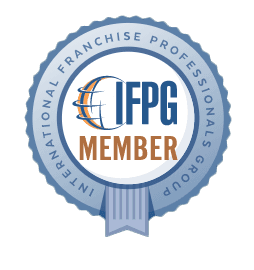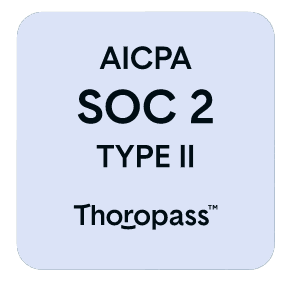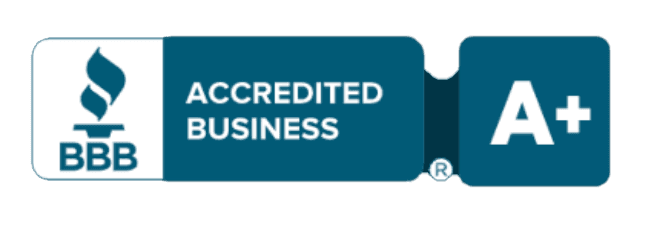The PPP Forgiveness Portal Is Now Open: 5 Tips for What to Do Next

The federal Payment Protection Program (PPP) ended on August 8, 2020. Although no new applications are being accepted, the thousands of small businesses who already received a loan — and the banks who issued those loans — must now make decisions about the process of obtaining loan forgiveness. The federal Payment Protection Program (PPP) was designed to help small businesses — and their employees — stay afloat during the COVID-19 pandemic. As long as these cash handouts are used for payroll and other essential operating expenses, it’s free money. If not, the business must repay the government. Confusing the issue are uncertainties about if or when the program will be reinstated, as well as the many grey areas in the rules on what business expenses do and don’t qualify for forgiveness. In any case, PPP loan recipients should be thinking about submitting their forgiveness application. Why give back the money you don’t have to, right? Here are our accountants’ best tips to help you as you wade into the process. Tip #1: Don’t Submit Too Fast While the SBA’s PPP forgiveness portal is open to lenders, many banks are not yet accepting loan forgiveness applications from businesses. Why? Because the situation is still up in the air and may change in your favor before the application deadline. For example, Congress was discussing the possibility of automatic forgiveness for loans of $150,000 or less, and a streamlined application for loans up to $2 million. If that happens, it would either completely eliminate or greatly reduce your (and your bank’s) paperwork burden. There’s still plenty of time to wait and see. The deadline for sending in the forms is 10 months from the end of the loan’s covered period. So if your loan period ends in September 2020, the forgiveness application deadline is July 2021. Stay in touch with your accountant for PPP developments that may affect your best interests. Tip #2: Self-Employed Borrowers *Really* Need to Wait As the rule stands now, you must compare your 2019 and 2020 incomes in order to determine what compensation you’re eligible for. But you won’t have any proof of your 2020 income until the end of the year. Hopefully, more guidance for self-employed PPP loan recipients will be issued soon, but until then, there’s nothing you can do but wait. Tip #3: Count All the Utilities You Can Utility costs such as electricity and water were always considered qualifying expenses. But more recent guidance documents from the SBA also include internet services which have proven to be essential during this time of working from home and remote delivery of goods and services. It’s possible — but not yet clear — that transportation costs for a business vehicle could be included as well. Again, keep an eye out for future updates and clarifications from the SBA. Tip #4: Take Advantage of FTE Exceptions Because the PPP was intended to help employees keep their jobs during the pandemic slowdown, the general rule is that wages — or full-time equivalent (FTE) — must remain and pre-pandemic levels. However, there are a variety of allowable exceptions for a reduced workforce, pay scale, or working hours. To mention just a few, employees who: Refused an offer to return to their job Were fired for cause or voluntarily resigned Voluntarily requested and received a reduction in hours Tip #5: Keep All the Documentation Documents you need to submit with the forgiveness application. Those that aren’t needed for submission but required to be retained by the borrower. Anything else that relates to your business operations during the period of the loan. It’s better to have too much backup than be missing the one piece of paper you needed to receive your PPP loan forgiveness. You’ll need to document: Full-time equivalent employees on payroll and their pay rates Retirement and health insurance contributions Eligible interest, rent, and utility payments Need help with your PPP loan forgiveness application or documentation? The small business accounting experts at xendoo have the information you need. Check out our affordable monthly plans today! [av_sidebar widget_area=’Blog Post Disclaimer’ av_uid=’av-om2w’]
COVID small business resources from the commercial sector

Facebook $100 million in cash grants and ad credits for small businesses. Go to the Small Business Grants Program page to sign up for notification when applications are open. James Beard Foundation Food and Beverage Industry Relief Fund is in the works. Sign up to receive grant criteria and application materials when they are ready. Kiva Zero-interest loans up to $15,000 with no payments for six months. Mainvest Zero-interest, 120-day, $2,000 loans for existing brick & mortar businesses negatively affected by the COVOID-19 outbreak. Restaurant Worker’s Community Foundation The Restaurant Workers COVID-19 Relief Fund will be allocated as grants for direct relief to restaurant workers, grants to nonprofit organizations serving restaurant workers, and no-interest loans for restaurants. Square All software subscription fees will be refunded for March for existing sellers who currently use Square Appointments, Retail, Restaurants, Loyalty, Team Management, Payroll, Marketing, and Square Online Store. Curbside pickup and delivery fees are waived for the next three months. Yelp $25 million in relief, primarily for independent local restaurant and nightlife businesses, in the form of waived advertising fees and free advertising, products, and services. Restaurants and nightlife businesses also receive free access to Yelp page upgrades and three months of free access to Yelp Reservations and Waitlist. For restaurant clients that offer delivery and/or takeout, Yelp will provide $100 in free search advertising. GoFundMe In partnership with Yelp, small businesses can take donations directly on their company’s Yelp page. Yelp and GoFundMe will also match the first $500 donated to any business. As small business specialists, xendoo is well aware of the impacts COVID-19 is having — and will have — on the finances of owners and employees alike. We stand ready to help you through this difficult time. Experience the xendoo difference with a one-month free trial. [av_sidebar widget_area=’Blog Post Disclaimer’ av_uid=’av-om2w’]
CARES Act – Everything You Need to Know
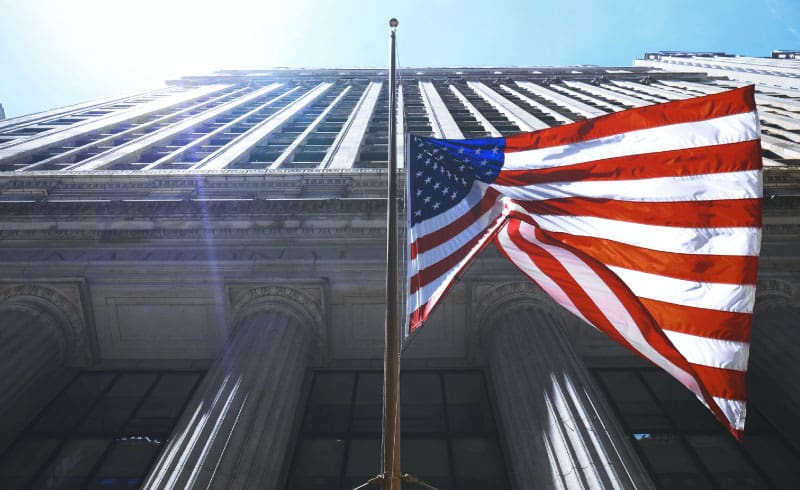
The CARES Act does the following: • Many U.S. residents will receive $1,200 (or $2,400 for joint filers) plus $500 per child under age 17. This benefit will be reduced as taxable income exceeds $75,000 for singles and $150,000 for marrieds filing jointly. Singles who have taxable incomes above $99,000 and marrieds filing jointly who have taxable incomes above $198,000 will not receive anything. Importantly, you must have filed a 2018 OR 2019 tax return to qualify. If you have, there is nothing for you to do at this time. • If you have lost your job, or if you are self-employed with no employees, you will most likely qualify for unemployment benefits. To apply for immediate unemployment benefits in Florida, please go to https://connect.myflorida.com/Claimant/Core/Login.ASPX. If you are located in another state, please check your state’s unemployment website. • Payroll Protection Program. Generally, any business with less than 501 employees (including self-employed individuals, independent contractors, sole proprietors, and non-profits) are eligible for a low-interest loan. The covered period is from February 15, 2020, to June 30, 2020. The maximum is 2.5 times certain monthly payroll costs, health insurance costs, mortgage payments, rent, interest on some debt payments, and utilities. If done properly, there is no recourse against the borrower, no personal guarantees, and no required collateral. There is also an element of forgiveness based upon a formula. Please visit https://covid19relief.sba.gov/#/ • Retirement Plan Distributions. Up to $100,000 can be distributed from a qualified retirement plan for those with vested account balances equal to this amount. There is no 10% premature distribution penalty for distributions before age 59½, and tax on the distribution can be spread over 3 years. There is no tax withholding and distributed amounts can be repaid over 3 years. • Up to the lesser of $100,000 or 100% of a participant’s vested account balance can be borrowed from a qualified retirement plan. There is even a deferral period before repayment commences. • There is no Required Minimum Distribution (the “RMD”) in 2020. Taxpayers, usually age 72 or older, will not be required to distribute the RMD from qualified defined contribution plans this year. This will prevent a participant from having to sell securities at a low price to fund an otherwise required distribution in 2020. • The percentage limitations on gifts of cash to a public charity have been increased from 60% to 100% of the taxpayer’s contribution base (approximately Adjusted Gross Income). Corporations go from 10% to 25%. • An employer can delay the payment of its half of Social Security Tax (but not the employee portion). This also includes Self Employment Taxes. 50% of the deferral will be due on December 31, 2021, and the remainder on December 31, 2022. This increases cash flow. • Net Operating Losses (“NOLs”) have been liberalized so that NOLs can be carried back for five years from 2018, 2019, and 2020. This will result in tax refunds for businesses that paid Income Tax in earlier years but now are suffering losses. • The Act provides a refundable payroll tax credit of 50% of employer wages (not to exceed $10,000 per employee) for businesses that were prohibited from operating during the pandemic. Thus, the maximum is $5,000 per employee. • Limits corporate stock buybacks and executive pay for airlines that receive grants or loans from the federal government to stay afloat. It would also fix the so-called retail glitch by allowing retailers to immediately write off expenses related to physical improvements instead of depreciating them over 39 years. • Sets aside $150 billion for states and localities whose tax revenues would be affected by moving the federal tax filing date from April 15 to July 15. The legislation also includes $130 billion to help hospitals, nursing homes, and other health care facilities. • Provides for the appointment of an inspector general and a congressional oversight board to scrutinize grants and loans made by the U.S. Department of the Treasury to businesses to help address the impact of COVID-19. As further details of the Cares Act unfold, we will be on top of it and share it with you. Hopefully, you or someone you know will be able to benefit from one or more of these provisions, to help us all get through this challenging time. [av_sidebar widget_area=’Blog Post Disclaimer’ av_uid=’av-om2w’]
Paycheck Protection Program
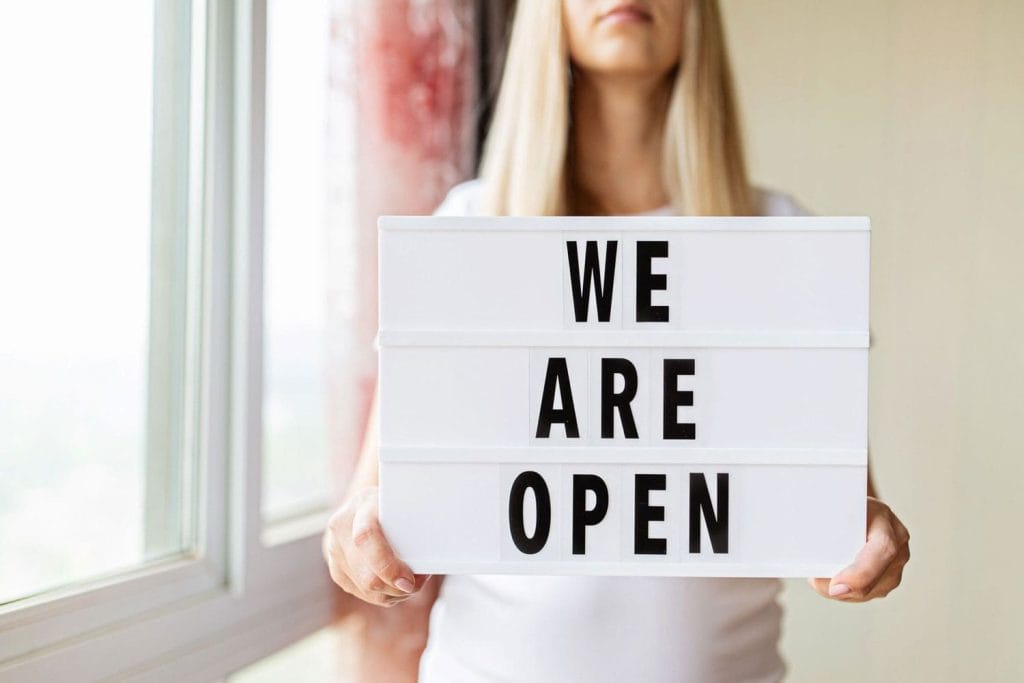
Important Update As of 4/31/21, SBA is unable to accept new applications at this time for the Paycheck Protection Program based on available appropriations funding. READ MORE HERE Loan Information This loan is designed to provide a direct incentive for small businesses to keep their workers on the payroll. SBA will forgive loans if all employees are kept on the payroll for eight weeks and the money is used for payroll, rent, mortgage interest, or utilities. LEARN MORE+ Covered Loan Period Retroactive to February 15, 2020, through June 30, 2020 Application Period April 3: Small businesses and sole proprietorships can start applying for paycheck protection loans from existing SBA lenders April 10: Independent contractors and self-employed individuals can start applying for paycheck protection loans from existing SBA lenders June 30, 2020: The program application window closes Eligible Businesses Small businesses, nonprofits, Tribal business concerns, and veteran’s organizations that: Have less than 500 employees or the applicable size standard for the industry as provided by SBA, or Are sole proprietors, self-employed individuals, or independent contractors Were in business on Feb. 15, 2020 Read our blog post on Paycheck Protection Program for self-employed individuals. Maximum Loan Amount The lesser of: 2.5X average monthly payroll costs during the 1 year* before the date on which the loan is made, or $10 million *For new businesses, the measurement period would be Jan. 1 to Feb. 29, 2020 The legislation also temporarily increases the maximum amount for an SBA Express loan from $350,000 to $1 million through December 31, 2020 Guarantees Increases the government guarantee of 7(a) loans to 100 percent through December 31, 2020 Allowable Uses Payroll costs (capped at $100,000 on an annual basis for each employee) Health care benefits (including paid sick or medical leave, and insurance premiums) Mortgage interest obligations Rent obligations Utility payments Interest on other debt obligations incurred previous to Feb. 15, 2020 Eligible Lenders SBA-guaranteed lenders. SBA and the Department of the Treasury are granted authority to determine additional lenders to administer the Payment Protection Program loans Maturity Schedule All loans have a 2-year maturity Interest Rate 1 percent fixed rate Payment Deferral All payments deferred for 6 months (interest will continue to accrue) Terms of Loan Forgiveness (Sec.1106) Loan recipients will be eligible for loan forgiveness for 8 weeks after the loan’s origination date in the amount equal to the sum of the following costs incurred during that period: Payroll costs (capped at $100,000 on an annual basis for each employee) Payment of interest on the mortgage obligation Rent obligations Utility payments SBA and Treasury guidance suggests not more than 25 percent of the forgiven loan amount may be used for non-payroll costs. If a business took out an SBA Economic Injury Disaster Loan (EIDL) related to COVID-19 between January 31 and April 3, 2020, the borrower may refinance the loan under this program and receive loan forgiveness benefits on the refinanced amount. The amount forgiven cannot exceed the amount borrowed. Loan forgiveness will be proportionally reduced if the average number of employees is reduced during the covered period as compared to the same period in 2019. The amount of loan forgiveness will be reduced by the amount of any reduction in total employee salary or wages during the covered period that is more than 25 percent of the total salary or wages. Payroll documentation and documentation of expenses are required to receive forgiveness, to ensure the forgiveness was used to retain employees and pay expenses Borrowers that rehire laid-off workers by June 30 won’t be penalized for having a smaller workforce at the beginning of the period Borrowers with tipped workers may receive loan forgiveness for the additional wages paid to those employees. Lenders have 60 days to issue a decision on the application. The canceled loan amount will not count towards gross income for tax purposes. Waivers Borrower and lender fees are waived Prepayment fees are waived The Credit Elsewhere requirement is waived Borrower Requirements Good faith certification that the loan is necessary because of economic uncertainty caused by COVID-19 and will be applied to maintain payroll and make required payments The borrower must also certify that they are not receiving this assistance and duplicative funds for the same uses from another SBA program No collateral or personal guarantee is required Nonbinding Guidance Lenders should prioritize small businesses, entities in underserved and rural markets, veterans and members of the military community, small business concerns owned by socially and economically disadvantaged individuals, women, and businesses in operation for less than 2 years Lender Reimbursements Lenders will be reimbursed at the following rates based on the balance of the financing outstanding at the time of loan disbursement: 5 percent for loans up to and including $350,000 3 percent for loans between $350,000 and $2,000,000 1 percent for loans above $2,000,000 Appropriated Amounts for Program $349 billion Last update 4 / 3 / 20 [av_sidebar widget_area=’Blog Post Disclaimer’ av_uid=’av-om2w’]
What do I need for my PPP application?

Important Update (Updated 4/24/20) On Thursday, April 23rd, the House approved a $484 billion package to help small businesses. This includes $310 billion for additional Paycheck Protection loans. The SBA has yet to re-open the application process. We will continue to update this post as we learn more. READ MORE HERE One of the most talked-about benefits of the coronavirus CARES Act is the Paycheck Protection Program also known as PPP. This program is intended to provide businesses with eight weeks of cash-flow for employers that keep their staff on payroll. We outlined what this program means for those that are self-employed here. Now, we want to help break down how the PPP loans are calculated and the fastest way to obtain these numbers. It’s important to note that how you will record your salary will vary based on your business entity type. How is the PPP loan calculated? The Paycheck Protection Program loans are calculated using the average monthly cost of the salaries paid to you and your employees. As a business owner, your salary is defined by the way your business is taxed. What is the fastest way to get these numbers? The fastest way to get these numbers is to download a payroll report through your payroll provider – this is if you have employees and/or pay yourself a salary). To our knowledge, we have seen that certain payroll providers are now offering “PPP reports” that output all the details you need for your loan application. Consult with your current payroll provider to see if this is an option. If you are self-employed, the fastest way to get your net profit is by getting catch-up bookkeeping done for 2019, including January and February of this year. By receiving catch-up bookkeeping services, your bookkeeper will provide you with an annual income statement that includes your net profit. For businesses that do not currently have a bookkeeping service, set up a no-cost consultation with our team. We are happy to help. Business Type Your salary will be Where you can find this Your other payroll costs may include Sole proprietor Your 2019 net profit (max. $100,000). You can find this on your 2019 tax return, reported on your Schedule C-line 31. If you don’t have a return, you can find this on your 2019 income statement. U.S. annual employee salaries including wages, commissions, tops, and state and local payroll taxes. Employees are capped at $100,000 annually. 1099 contractor The sum of your income earned through freelance work, as reported on the 2019-1099-MISC forms you received (max. $100,000) Reported on the 2019 1099-MISC forms you received. None at this time. Partnership Your 2019 self-employment earnings. If you have a 2019 tax return, this is reported on line 14, your Schedule K-1. You may include K-1 earnings as salary for each partner up to $100,000. U.S. annual employee salaries including wages, commissions, tops, and state and local payroll taxes. Employees are capped at $100,000 annually. S corp Your salary as reported through a payroll service (max.$100,000). Your salary may only be considered if it was paid through payroll while remitting payroll tax. Your salary may only be considered if it was paid through payroll while remitting payroll tax. U.S. annual employee salaries including wages, commissions, tops, and state and local payroll taxes. Employees are capped at $100,000 annually. C corp Your salary as reported through a payroll service (max. $100,000). Your salary may only be considered if it was paid through payroll while remitting payroll tax. Your salary may only be considered if it was paid through payroll while remitting payroll tax. U.S. annual employee salaries including wages, commissions, tops, and state and local payroll taxes. Employees are capped at $100,000 annually. What is the fastest way to get these numbers? The xendoo team is here to help provide as much information as possible in regards to the Paycheck Protection Program and additional loan options available. If you’re a current customer and have questions that we can help with, please contact our team at support@xendoodevelop.wpengine.com. If you need assistance getting your financials in order so you can apply for these relief efforts, please set up a no-cost consultation with our team to get started. We are here to help. Last update 4 / 14 / 20 [av_sidebar widget_area=’Blog Post Disclaimer’ av_uid=’av-om2w’]


